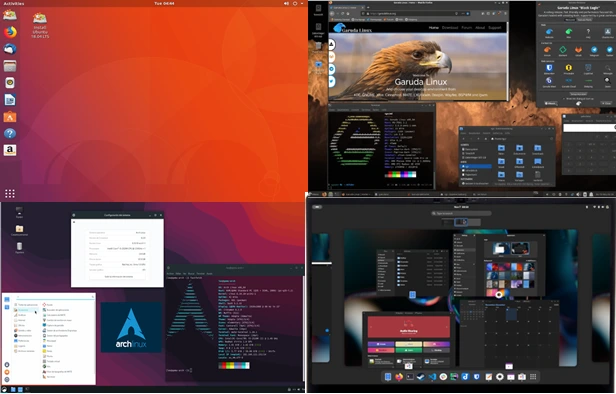
The Linux ecosystem has always been known for its innovation, versatility, and blazing performance. In 2025, Linux continues to lead the charge in modern computing, with distributions catering to everyone from power users to developers and gamers. Whether you’re looking for complete control, cutting-edge features, or just raw speed, there’s a Linux distro tailored for you.
This article explores five of the most advanced and fastest Linux distributions in 2025, each offering unique strengths in terms of customization, performance, and innovation. If you’re ready to explore the pinnacle of Linux technology, read on to find your next favorite distro!
1. Arch Linux
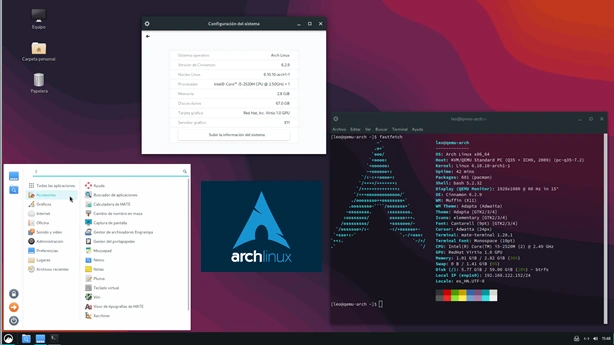
Why It’s Advanced:
Arch Linux is a perennial favorite for those who demand ultimate control over their operating system. It’s a “DIY” Linux distro that empowers you to configure your system from the ground up. The Arch Wiki, often called the Bible of Linux, is an incredible resource that guides users through every aspect of setup and troubleshooting.
Features and Highlights:
- Rolling Release Model: Always have the latest software, kernel updates, and drivers without needing a major upgrade.
- Minimal by Default: Arch installs with only the bare essentials, so you build your system to suit your specific needs.
- AUR (Arch User Repository): Access thousands of community-contributed packages for cutting-edge and experimental software.
- Pacman Package Manager: Fast and efficient package management for installing and updating software.
Performance Boosters:
- Lightweight and highly customizable installation eliminates unnecessary overhead.
- Native support for performance-optimized kernels like linux-lts, linux-zen, and linux-hardened.
- Tools like zram and systemd-oomd ensure efficient memory management.
Ideal Use Cases:
- Developers and power users who want full control of their OS.
- Advanced users who want to learn the inner workings of Linux.
2. Fedora Silverblue

Why It’s Advanced:
Fedora Silverblue is the flagship for immutable Linux desktops. Unlike traditional systems, it uses an atomic model, where the base system is read-only. This design makes it ideal for environments that prioritize stability, security, and container-based development workflows.
Features and Highlights:
- Immutable OS Design: Prevents accidental system modifications or corruption. Any update or change is applied atomically and can be rolled back.
- Flatpak First: Fedora Silverblue heavily relies on Flatpak for app delivery, ensuring sandboxing and modern dependency handling.
- Container-Centric Workflow: Integrated support for Podman and OCI containers makes it a perfect fit for developers working with containerized applications.
Performance Boosters:
- Wayland Graphics Protocol: Ensures smooth and modern graphics performance, especially on newer GPUs.
- Btrfs as Default File System: Transparent compression and snapshotting improve speed and reliability.
- Atomic Updates: Ensure a fast and seamless upgrade experience, reducing downtime.
Ideal Use Cases:
- Developers building and testing containerized applications.
- Users looking for a modern, stable, and forward-thinking Linux distro.
3. NixOS
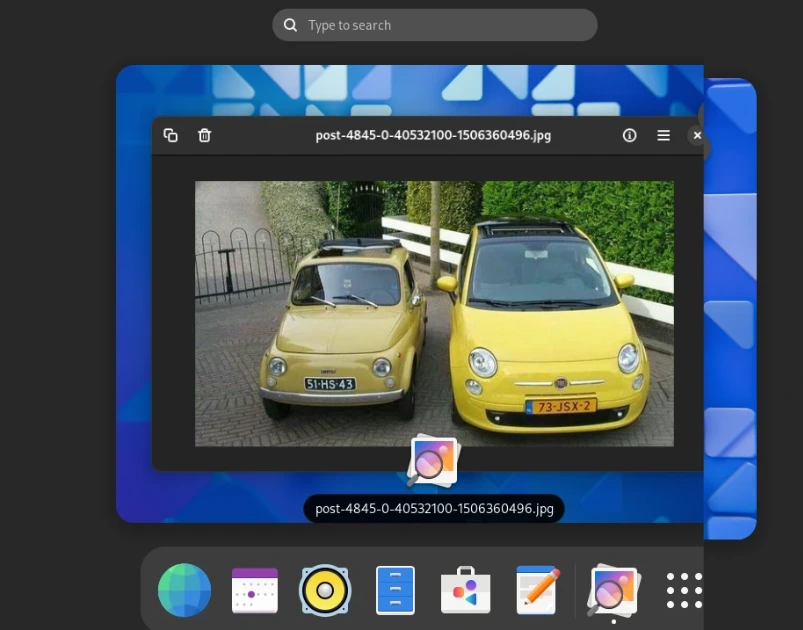
Why It’s Advanced:
NixOS has redefined how Linux systems are managed with its declarative configuration model. This innovative approach ensures that your entire system is reproducible, version-controlled, and easy to rebuild from scratch.
Features and Highlights:
- Declarative Configuration: Every aspect of the OS, from installed software to system settings, is described in a single configuration file.
- Isolation of Dependencies: Each application gets its own set of libraries and dependencies, eliminating conflicts.
- Nix Package Manager: Supports transactional updates and rollbacks, so you can undo changes with ease.
Performance Boosters:
- Streamlined dependency handling eliminates overhead and improves application execution.
- Atomic updates make system upgrades fast and reliable without breaking existing setups.
- Minimal resource usage out of the box, with the ability to fine-tune everything.
Ideal Use Cases:
- DevOps engineers and system administrators who prioritize reproducibility.
- Advanced users who want a unique and robust approach to system configuration.
4. Garuda Linux
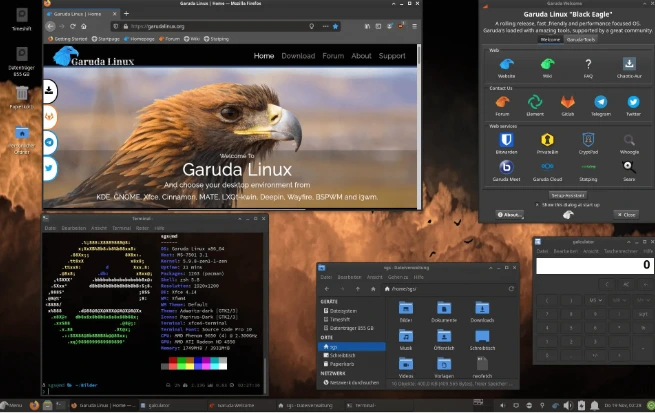
Why It’s Advanced:
Garuda Linux takes the Arch Linux base and elevates it with a focus on out-of-the-box performance and user-friendly features. It’s designed for gamers, enthusiasts, and anyone looking for a polished, high-performance experience.
Features and Highlights:
- Pre-Tweaked Performance Settings: Ships with the linux-zen kernel, tuned for maximum responsiveness and speed.
- Visual Appeal: Offers gorgeous themes and a stunning user interface with pre-configured KDE Plasma and other DEs.
- Gaming Focus: Comes pre-installed with gaming tools like Steam, Lutris, and GameMode for enhanced gaming performance.
- Garuda Assistant: A comprehensive system management tool that simplifies common administrative tasks.
Performance Boosters:
- Btrfs by Default: Built-in snapshots and compression improve system responsiveness and reliability.
- Dynamic Swap with zRAM: Ensures optimal memory management, especially on systems with limited RAM.
- Performance-Tuned Applications: Default configurations prioritize speed without sacrificing functionality.
Ideal Use Cases:
- Gamers and content creators who demand fast, optimized performance.
- Users looking for a visually stunning and performance-first Linux experience.
5. Ubuntu Minimal (Minimal Core)
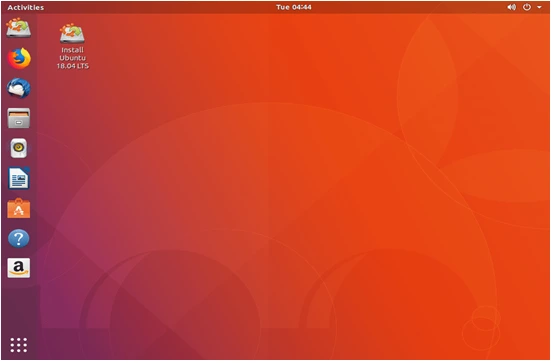
Why It’s Advanced:
Ubuntu Minimal has emerged as Canonical’s answer to lightweight and fast Linux needs. This streamlined version of Ubuntu focuses on delivering a stable base system without any unnecessary bloat.
Features and Highlights:
- Barebones Installation: Provides only the essential packages, giving users full control to build their system.
- Hardware Compatibility: Excellent driver support for modern hardware, thanks to Canonical’s partnerships with major manufacturers.
- Snap and Flatpak Support: Out-of-the-box support for these modern packaging formats ensures access to the latest apps.
Performance Boosters:
- Minimal resource usage due to its lightweight nature.
- Optimized kernel for modern CPUs and GPUs ensures fast boot times and responsiveness.
- Tools like Cloud-Init make it easy to deploy and configure Ubuntu Minimal in cloud environments.
Ideal Use Cases:
- Developers and sysadmins looking for a clean, stable base for server or desktop use.
- Lightweight desktop enthusiasts who value Ubuntu’s ecosystem and stability.
Conclusion
The Linux distributions of 2025 represent the perfect marriage of performance and advanced functionality. Arch Linux provides the ultimate flexibility, while Fedora Silverblue and NixOS showcase the future of immutable and declarative Linux. Garuda Linux appeals to gamers and enthusiasts seeking peak performance, and Ubuntu Minimal continues to dominate as a lightweight, stable base for any project.
Whether you’re a power user, developer, or gamer, there’s a distro on this list that fits your needs. Linux keeps evolving, and these distros highlight the best of what’s possible in 2025.
Which one will you install? Let us know in the comments!

